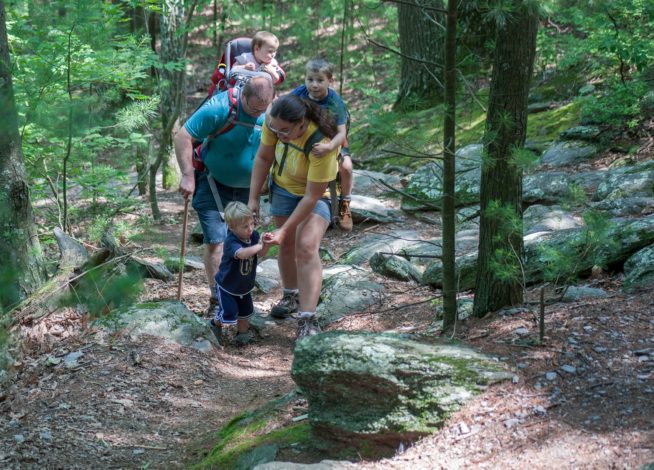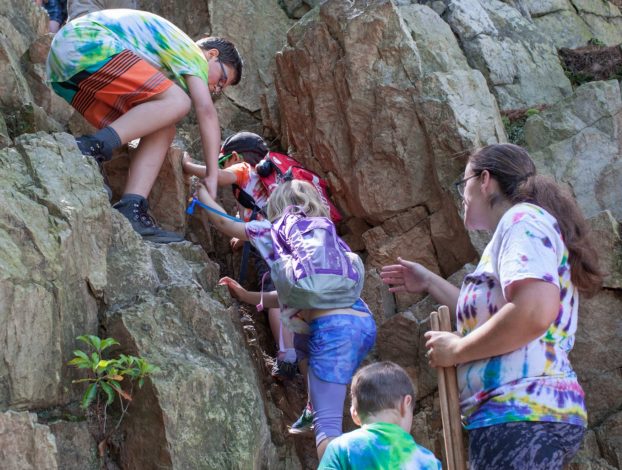6 Tips for Hiking on Difficult Terrain with kids
- Blog 6 Tips for Hiking on Difficult Terrain with kids
Hiking with kids can be a difficult endeavor on the easiest of trails, which can sometimes discourage us from taking on the challenge of more demanding terrain. We get caught up in all the logistical details and lose focus on why we are out hiking in the first place, which can cause us to underestimate kids and their amazing abilities and capacity to overcome challenges. Here are a few tips for helping your kids tackle more of the big terrain and achieve special moments.
No matter what, safety is the most important consideration. Though we want kids to stretch their limits, the goal of each hike is for everyone to stay safe. Hike at your own risk and assess all hazards at your comfort level.


1. Have the right gear
Make sure you equip your child with the right gear for success. If kids are not dressed appropriately, it is an unseen hazard for them. Shoes that fit well and have good grip and stability will help them navigate loose slopes and rocky terrain safely. Close-fitting, flexible clothes set them up for success. If you plan on having extra gear for a certain purpose (headlamp for a dark cave, hiking poles for steep climbs, extra layer for a windy summit, etc.), your kids should have equivalent gear.2. Practice on shorter, easier trails
Before you tackle a several-mile hike that has steep hills and rock scrambling, try and tackle a shorter trail that has similar obstacles. If you notice a steep hill in your neighborhood, make it a fun challenge to see if your child can make it all the way up the hill to gauge their interest and capabilities. Keep an eye out for any opportunities for your child to practice their hiking skills.
3. Assess risk and give them space to learn
Analyze a particular challenge and determine the actual risks associated with it. Too often we constantly tell kids, "Be careful!" Try to point out specific hazards (a sharp rock, steep cliff or loose dirt) and brainstorm together how to stay safe. Set boundaries for safety and then let them try things on their own and fail when possible so they can learn.4. Spot instead of lift
If there is a rock, log or stream crossing on the trail, we often, without thinking, just lift our kids over it. Let them navigate obstacles on their own and be close enough to offer support. Let them feel what strength they need to get over it or problem solve their way around it. This allows them to improve their skills and gain confidence.5. Recognize true danger spots and offer assistance
There are some trails and terrain that are not and will never be safe for little hikers. The most important factors to look for are hidden dangers: a steep cliff that is obscured by vegetation, a stream that is moving faster than it seems, unstable rocks that could fall if touched. If kids can’t recognize the obstacle, they can’t take the right safety steps. Also consider the consequences of a fall or mistake. A tumble down a short hill can be a good learning experience; a slip off a steep ledge can be dire. Falling into a shallow stream on a warm day will teach them; falling into deep water on a cold day could become an emergency situation. Recognize true dangers and take the appropriate safety measures (hold a hand, pick them up or turn around).
6. Just try it!
Get out there and try new things. If there is a hike you have been excited to try but don’t think your kids can handle it, break it down into what skills they actually need to accomplish it and work on those skills. Make new obstacles a big deal and get them excited to push themselves. Kids will surprise you! Do you have any tips for hiking with kids on difficult terrain? Let us know in the comments below! Photos by Kendra Reeder.READ MORE:
Related Content




Comments